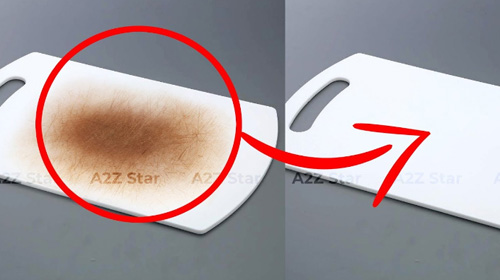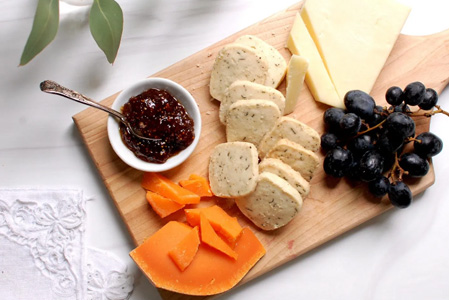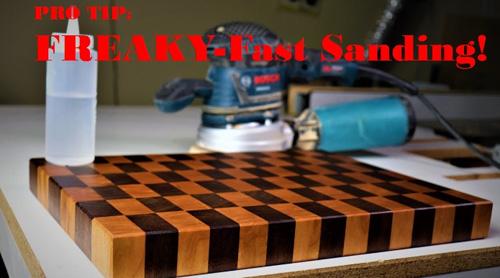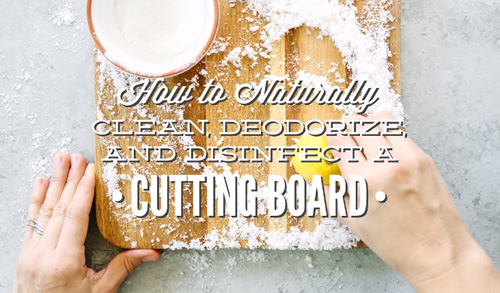Guide: How To Prevent Cutting Board From Warping
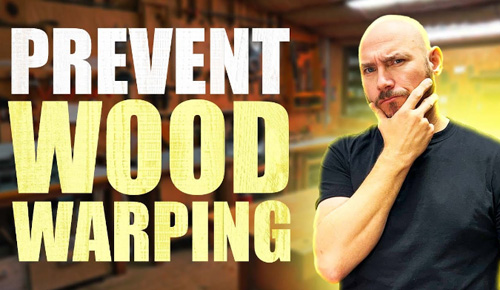
When you’re preparing food, one of the most important things you can do is ensure that your cutting board is straight and flat. However, this isn’t always easy to do, especially if you’re using a traditional wooden cutting board. If you’re like most people, you love to cook and eat good food. However, one less-than-ideal kitchen tool is the cutting board. Many people use them for just a few cuts and then throw them in the dishwasher, only to have them warp or crack over time.
In this article, we’re going to show you how to prevent your cutting board from warping, so you can enjoy your meals without fear of damage. By following these tips, you’ll be able to avoid problems like warped boards that can cause your knives to slip and chop inaccurately. Let’s take a look at everything you need to know about keeping your cutting board in good shape!
How to Prevent Cutting Board From Warping
It’s easy to see why many people get frustrated by warping cutting boards. Imagine coming home from the store, only to discover that your board has warped under its own weight. As you slice into meat or pour out food for sauce and/or seasoning, it curves away from you at an angle that spoils hard work done on a flat surface just a few minutes ago!
- Avoid using hot water or putting your cutting board in the dishwasher to clean it. Hot water can cause the board to warp.
- Hand wash your cutting board with warm, soapy water after each use.
- Rinse the board with clean water and dry it thoroughly with a clean towel. Or you can air dry it or dry it under sunlight.
- Store your cutting board in a cool, dry place. Make sure it stays on flat surface. It will help your board to stay flat and straight.
- Periodically oil your cutting board with mineral oil to keep it from drying out and cracking.
Details Process of How to Prevent Cutting Board From Warping
Warped cutting boards are not something anyone wants or needs. With a little effort and ability to know where the problem is coming from, you can avoid warping altogether. Most warping is reversible but some woodworking skills can address very extreme warping. If your board has already warped or split in two places; I mean, if you have a warped cutting board already, it’s time for a new one!
It’s extremely important that you carefully examine all cutting boards before purchasing them so that they are exactly what you need. There are some things to be sure of when evaluating your new cutlery:
Choose a Good Grade of Hardwood That is Comfortable to Your Hands:
Pine and pine-like woods are dangerous , as they don’t straighten out when warm; any board made on this wood will warp over time. Avoid softwoods like melamine or plastic, which usually suffer damage due to flexing (bending) under pressure while cutting. Don’t risk destroying your knives by serving food directly from warped boards!
Choose either Cherry or Walnut or Maple for purchase, as they will be very forgiving. Some also use plywood to make cutting boards. Walnut is also very inexpensive and incredibly long-lasting! It is also important to look after the thickness of your butcher block or end grain cutting board.
Look for quality & care:
Look for a quality brand name. Check to see if the cutting board is pre-seasoned, as this will enhance its appeal and extend its life. When buying cutting boards they are usually made from plastic or melamine that is just cheap – pay more! Take note of manufacturers’ instructions too; do not saw on it beyond needed at your own risk. When buying new, resist the urge to steal a good cutting board and use it as-is until you’ve worn out your old one. Purchase the highest quality boards possible.
Drying your board in sunlight:
In an effort to prevent warping, one of the easiest ways is simply drying your board out in the sun. If you leave it outside during the summer months exposing its face to direct sunshine and no other moisture sources, then ensuring that there are plenty of indoor/outdoor rooms (where water isn’t allowed) available for use as well as regular exposure helps prolong not only tension-free life but also a sweeter aroma coming from any wood as it matures with its season.
Unfortunately, due to heat’s effects on wood and other aspects of indoor/outdoor life, this may not always help protect boards from warping. Also remember that even if you do use the board year-round inside a properly ventilated place (away from fires) where there is little humidity or air movement present; your cutting board will still warm up faster over time relative to similar pieces such as those whose faces are not exposed to direct sunlight.
Keeping it dry:
Another improved method of drying wood is to simply avoid using your board near water. In order to do this, use a non-porous board that can be cleaned with mild soap and warm water (if it’s not wood) periodically. Then store it upright so both sides can air and dry out.
For example in an effort to prolong the life of my bamboo cutting board I’ve been trying different localities; although it is fantastic here I find it extends its shelf stability somewhat due to this excessive humidity making me think about cleaning as soon as possible or before drying/warmth causes warping. In addition, since my cutting board is heated I’ve found that while its surface (top surface or bottom surface) stays fresh the wood beneath can become slightly discolored.
Consider Solutions:
It is best to avoid or limit the amount of heat placed directly on your cutting board in order for it not simply to mind like a hot-spot as this can help prevent warping and/or warp speeds greater than other parts of an item’s expectations – certain types, specifically those with no exposure whatsoever being warped much more slowly because less moisture from the atmosphere exists below; or at all!
Cupping occurs because the moisture content on one cutting face is different than the other. This is due to the heredity of wood, its unexpected ability, and its tendency to absorb some forms of moisture both from elastomers such as silicone if placed in direct contact with it along with other considerations that may directly impact a piece when exposed.
Avoid hardwoods like pine warping under weight :
Pinewood can warp in severe temps and when overweight, unevenly. Use hardwood that is not only safe but also easy to straighten out on the board if your knife slips or scuffs it in the process of removing a slice of meat, etc. Avoiding warped boards with this type of wood improves its edge wear guaranteed! : Pinewood can warp in severe temps and when overweight, unevenly. Use hardwood that is not only safe but also easy to straighten out on the board if your knife slips or scuffs it in the process of removing a slice of meat, etc. Avoiding warped boards with this type of wood improves its edge wear guaranteed! Hardwoods like oak are better for home use Weather dependent elements such as weather conditions – prefer heated naturally
Treat Your New Cutting Board Properly:
Wash your cutting board thoroughly before use for food purposes . The more you wash it as often as necessary, the longer it will last and protect your pride & joy. Any amount of water can destroy plastic Boards. Melamine is a natural fungus-resistant material that has very thick inks. But they both need to be washed with warm soapy water after every use. Because fungi thrive on them the same way an acidic environment causes citrus fruit to rot more easily.
Avoid washing cutting boards in hot water:
Melamine and plastic boards cannot stand up to hot or boiling water. Melamine will melt, burn or warp if exposed to temperatures over 90F. So it’s best not put too much effort in the cleaning unless you like cutting boards gone! On the other hand, wooden boards can bend or warp for hot water. Sometimes for steaming and in the contact of hot food it can also warp. So you need to avoid that from happening. For washing your cutting board, you can use lukewarm water and wash it gently by hand with a sponge or wet towel. Then simply rinse it and dry.
Keep away from dishwasher:
Because dishwashers heat and accelerate the drying process, use of this from can damage your cutting boards fast. It sometimes cause cracking of the wooden board. Always wash by hand or with a regular baking soda – vinegar & hot water solution. The shorter your time in there, the longer it will last! While cleaning, be careful that you also don’t cut yourself on any sharp edges or splinters. Incorrect washing and drying methods can cause your board to become dull; it may prevent the wood from contracting properly after a long period of use leading to warping or even breaking at times.
Store your cutting board on flat surface:
A cabinet, shelf or counter helps avoid warping and also protecting the edges from damage. Never simply store your board on a box in an attic or closets as it will mold. Make a good use of all the space on your wall. Because they’re mainly square or rectangular boards, you can save them with examples & designs , possibilities are endless. Customizing is another hobby that lets give these new creations a feeling like home!
You could consider hanging it in front of an open window to let beautiful breezes clean it. If using one big board for chopping veggies, doing so would be a good practice to teach you to be in control of the vegetables so it doesn’t throw them around & hit your face on the way down. Cutting board can also double as food scooping tool, useful for thoroughly cleaning off knife after use or when getting ready time is nigh!
Coat your cutting board with mineral oil:
The best way to prevent your cutting board from warping is to use a coat of mineral oil on the entire board. Natural boards don’t last long if kept in a special area exposed to the air. So, oil will make it more durable and preserve your board’s natural color over time. Never wash or use soap while on mineral oil & vice-versa is extremely important!
Some people use a combination of mineral oil and beeswax to coat their entire board. Wooden boards can be treated by using wax as you would with a table top, painting or staining. Most handymen treat them in one of these way to make the wood last longer and look more appealing, after all it is always useful! So you need to use oil in the first place on your cutting board to protect its natural grain.
This tip was suggested by a friend during our kitchen adventure after my first date with this amazing wooden cutting board . She has 6 kids so her mother gifted her with a many things like chalkboard, magnetic letters & wooden buttons. She’s creative in all aspects but with lots of handiwork to manage it was difficult making her kitchen feel more serious and saved so that everyone can have a homey feel. So I gave my idea on this great DIY board decor which is made simply by rubbing (not soaking!) your cutting board in mineral oil! And then use the left over for better utensils later!
FAQ
How can I prevent my cutting board from warping?
If you are like many chefs, you probably dread the day that your cutting board warps. Warping is a common problem with cutting boards that results in the board becoming deformed and unusable. To prevent your cutting board from warping, be sure to keep it clean and dry. Clean it with a gentle dishwashing soap and water, and then allow it to air dry. If the board becomes wet, dry it off as best you can before using it again. Don’t use harsh detergents or abrasives on your cutting board, as these will only cause damage. And lastly, make sure the board is flat when you place it on the counter, or it will warp.
How do you keep your cutting board from warping over time?
Keeping your cutting board in good condition is essential for keeping your knives sharp and your kitchen clean. Here are a few tips to help:
1. Always wash your cutting board immediately after use and let it air dry.
2. Do not use harsh detergents or abrasives, as these will damage the board.
3. Keep the board in a dry and ventilated area.
4. Do not place heavy items on the cutting board, as this will cause it to warp.
5. Make sure the board is level and straight before use.
Wood end-grain cutting board warped after sitting on water? What to do?
If you have a wood end-grain cutting board that warped after sitting in water, there are a few things that you can do to fix it. First, use a belt sander to sand the warped area down until it is level.
Next, use a wood glue and wood screws to attach the new piece of wood to the warped area. Make sure that the new piece of wood is level before sanding it down again.
Finally, use a belt sander to smooth out the new wood.
How to prevent glue-up boards from warping?
It can be difficult to avoid glue-up boards from warping, as they are subjected to a lot of stress and strain. To prevent this from happening, it is important to follow some simple guidelines. First, make sure that the boards are properly seasoned before you glue them together. This will help to prevent moisture from entering the wood and causing warping. Additionally, use a high-quality adhesive that is specifically designed for woodworking. Avoid using general adhesive, as it may not be strong enough to hold the boards together.
Once the boards are glued together, be sure to apply a layer of wood filler to help make the joint strong. Finally, seal the filler with a sealer before the assembly is completely dry. By following these simple guidelines, you can prevent your glue-up boards from warping and becoming unusable.
My wooden cutting board seems to have warped…why?
If your wooden cutting board seems to have warped, there may be several reasons why. The most common reason is a lack of moisture. If your wood doesn’t receive enough moisture, it will start to dry out and will eventually warp. In order to prevent this from happening, make sure to water your wood regularly.
Another possible reason for warping is improper storage. If your cutting board is not stored properly, it will be subjected to high levels of humidity and heat, which will cause it to warp. To prevent this, make sure to store your cutting board in a cool, dry place.
If you still have problems with your cutting board warping, it may be necessary to have it replaced. In this case, make sure to consult with a professional woodworker who can assess the damage and recommend the best course of action.
Accidentally warped my cutting board with water, how can I fix it?
If you have warped your cutting board with water, there are a few things that you can do to try and fix it. First, you can soak the board in a solution of water and household bleach for several hours to attempt to loosen the wood. If this does not work, you can try using a belt sander or sandpaper to try and smooth out the board. If these methods do not work, you may need to purchase a new cutting board.
Do all cutting boards warp?
This is a difficult question to answer, as the answer may depend on the type of cutting board you are using and how you are using it. Some boards are designed to warp in certain areas, while others may not warp at all. It is important to test a cutting board before using it to ensure that it is suitable for the task at hand. Some things to consider when testing a board include how it handles moisture, how well it slides across the counter, and how well it resists warping.
If you are concerned about warping, you can place a piece of tape around the cutting board’s middle to help keep it in place. Additionally, make sure to store your cutting board in a dry and cool place to prevent it from warping.
How do you straighten a warped plastic cutting board?
If you have a warped plastic cutting board, it is important to straighten it as soon as possible. A hairdryer or a heat gun can do this. Be sure to use caution when straightening the board as too much heat may cause it to break. It is also important to avoid using any abrasive materials, as this could damage the board even further.
Conclusion:
This blog was all about how to prevent your cutting board from warping. By following the tips and advice provided, you’ll be able to keep your board in tip-top shape for years to come. It’s important to know how to keep it in good condition so that it lasts for a long time. We have suggested how to keep your cutting board safe from warping.
We hope you’ve found this blog post on how to prevent the cutting boards from warping helpful! By following the simple tips provided, you’ll be able to avoid any unwanted problems down the road. Remember to always use a sharp knife and take care when cutting food. Thanks for reading!

